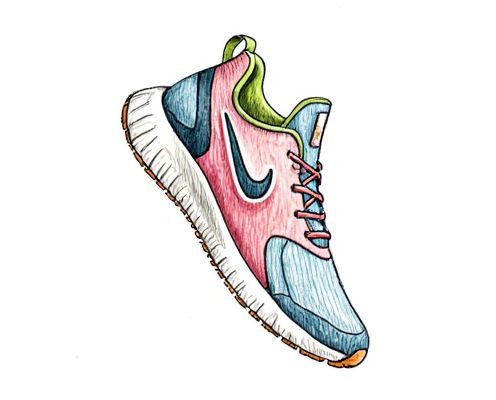
Eco-conscious athleisure Illustration
Eco-conscious athleisure in activewear pet combines sustainability with high performance, using recycled materials derived from discarded plastic bottles and pre-consumer textile waste. These innovative fabrics offer breathability, moisture-wicking, and durability while minimizing environmental impact. Choosing eco-conscious activewear pet supports a greener future by reducing landfill contributions and conserving natural resources.
Why Eco-Conscious Athleisure Matters for Modern Women
Eco-conscious athleisure offers modern women sustainable fashion choices that reduce environmental impact through the use of organic fabrics and recycled materials. Prioritizing eco-friendly activewear supports ethical production practices and minimizes carbon footprints, aligning with the values of environmentally aware consumers. This trend empowers women to make responsible lifestyle decisions while enjoying high-performance, stylish apparel designed for everyday wear.
Top Sustainable Fabrics Transforming Women’s Activewear
Organic cotton, recycled polyester, and Tencel represent the top sustainable fabrics revolutionizing women's activewear by offering breathability, durability, and moisture-wicking properties. These eco-conscious materials reduce environmental impact through lower water consumption, energy-efficient production, and biodegradability, aligning with the growing demand for green workout gear. Innovations in fabric technology enhance comfort and performance, ensuring sustainable activewear meets the rigorous standards of modern fitness enthusiasts.
Stylish Designs: Merging Sustainability with Fashion
Eco-conscious athleisure merges stylish designs with sustainable materials like recycled polyester and organic cotton, creating fashion-forward activewear that reduces environmental impact. Brands prioritize innovative, eco-friendly production methods while delivering trendy silhouettes and functional performance. This fusion of sustainability and style appeals to consumers seeking both ethical choices and contemporary aesthetics in their activewear wardrobe.
Ethical Production: Brands Leading the Change
Ethical production in eco-conscious athleisure emphasizes sustainable materials, fair labor practices, and transparent supply chains. Brands like Patagonia, Girlfriend Collective, and Tentree are leading the change by committing to cruelty-free fabrics and reducing carbon footprints. Your choice to support these brands promotes environmental responsibility and social equity in activewear.
Benefits of Choosing Eco-Friendly Activewear
Eco-friendly activewear made from sustainable materials such as organic cotton, recycled polyester, and bamboo fibers reduces environmental impact by minimizing waste and lowering carbon emissions. These garments often feature non-toxic dyes and water-efficient manufacturing processes, ensuring safer production for workers and ecosystems. Choosing eco-conscious athleisure promotes durability, breathability, and comfort while supporting ethical brands committed to reducing the fashion industry's carbon footprint.
Innovations in Recycled Materials for Athleisure
Innovations in recycled materials for athleisure have revolutionized eco-conscious activewear by integrating sustainable fibers such as regenerated nylon, recycled polyester, and organic cotton blends. Brands employ advanced techniques like closed-loop recycling and bio-based dyes to minimize environmental impact while maintaining high performance, moisture-wicking, and durability features. These developments support carbon footprint reduction and promote circular fashion models, aligning with consumers' growing demand for ethical and green athletic wear.
How to Identify Truly Sustainable Activewear Brands
Truly sustainable activewear brands prioritize using organic and recycled materials, such as GOTS-certified organic cotton and recycled polyester made from post-consumer plastic bottles. They implement transparent supply chains with third-party certifications like Fair Trade, OEKO-TEX, and Bluesign to ensure ethical labor practices and reduced environmental impact. Brands that invest in carbon-neutral production, water-saving technologies, and circular design principles further demonstrate a genuine commitment to eco-conscious athleisure.
Care Tips for Extending the Life of Sustainable Activewear
Proper care of your sustainable activewear begins with washing in cold water and using eco-friendly detergents to preserve fabric integrity and reduce environmental impact. Air drying your eco-conscious athleisure garments prevents damage from high heat and maintains their shape and elasticity. Avoiding fabric softeners and harsh chemicals ensures your activewear remains breathable and effective for longer workouts while supporting your commitment to sustainability.
The Impact of Eco-Conscious Choices on the Fashion Industry
Eco-conscious athleisure reshapes the fashion industry by reducing environmental footprints through sustainable materials like organic cotton, recycled polyester, and bamboo fibers. Brands adopting eco-conscious practices lower carbon emissions, conserve water, and minimize waste, fostering a more responsible production cycle. Consumer demand for transparency and ethical sourcing drives innovation, positioning eco-conscious athleisure as a catalyst for broader industry transformation.
Future Trends: Next-Level Sustainability in Women’s Activewear
Eco-conscious athleisure in women's activewear is evolving with innovations in biodegradable fabrics, recycled polyester, and plant-based dyes that reduce environmental impact without compromising performance. Brands are investing in circular fashion models, incorporating take-back programs and closed-loop manufacturing to minimize waste. Emerging trends highlight smart textiles with moisture-wicking and antimicrobial properties derived from sustainable materials, driving next-level sustainability in the activewear market.
 womendy.com
womendy.com